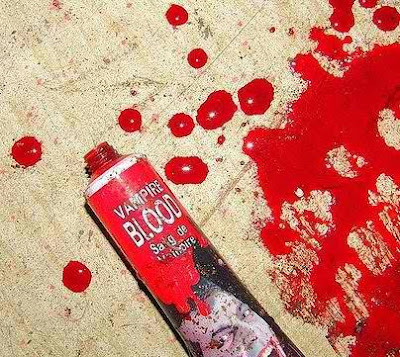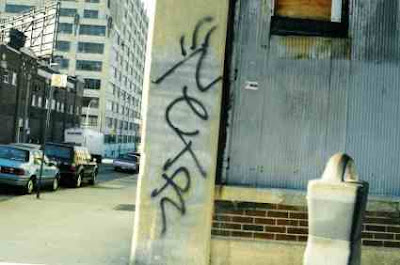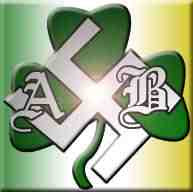
Piru Blood Walk is an activity in the blood groups in a way on foot to conduct attacks against other groups, this is a pride of idiosyncrasies in the group because only by foot remains courageous and ready for combat.
Gangsters reign as the world everywhere, they have many symbols and symbols to identify themselves, fellow members of gangsters. Activities carried out mainly in the areas of crime, both ravish, steal, trade, drugs, night clubs, security and others.

 As the Crips grew in South Central Los Angeles in the early 1970s they began targeting other gangs. It was during this time of conflict that several gangs joined forces to combat the growing Crip threat. The most well known gang within this group was the Piru Street Boys. They lead the revolt against the Crips and were instrumental in creating the Bloods gang in 1972.
As the Crips grew in South Central Los Angeles in the early 1970s they began targeting other gangs. It was during this time of conflict that several gangs joined forces to combat the growing Crip threat. The most well known gang within this group was the Piru Street Boys. They lead the revolt against the Crips and were instrumental in creating the Bloods gang in 1972. The United Blood Nation, simply called the Eastcoast Bloods (not to be confused with the West Coast L.A. Street Gang) is primarily a street gang, formed in 1993 within the New York City jail system on Rikers Island's George Mochen Detention Center. GMDC was used to segregate problem inmates from the rest of the detention center. Prior to this time period, the Latin Kings were the most prevalent and organized gang in the NYC jail system. The Latin Kings, a Hispanic Latino street gang, were targeting African-American inmates with violence. These African-American inmates, organized by some of the more violent and charismatic inmates, formed a protection group which they called the United Blood Nation, in imitation of the West Coast gang. Though they closely resemble the Bloods found on the West Coast, the United Blood Nation or Eastcoast Bloods is unaffiliated with them, and therefore didn’t originally share any of their rivalries or their allies. Several of the leaders of this recently created prison gang formed nine New Blood sets to recruit in their neighborhoods across New York and New Jersey.
The United Blood Nation, simply called the Eastcoast Bloods (not to be confused with the West Coast L.A. Street Gang) is primarily a street gang, formed in 1993 within the New York City jail system on Rikers Island's George Mochen Detention Center. GMDC was used to segregate problem inmates from the rest of the detention center. Prior to this time period, the Latin Kings were the most prevalent and organized gang in the NYC jail system. The Latin Kings, a Hispanic Latino street gang, were targeting African-American inmates with violence. These African-American inmates, organized by some of the more violent and charismatic inmates, formed a protection group which they called the United Blood Nation, in imitation of the West Coast gang. Though they closely resemble the Bloods found on the West Coast, the United Blood Nation or Eastcoast Bloods is unaffiliated with them, and therefore didn’t originally share any of their rivalries or their allies. Several of the leaders of this recently created prison gang formed nine New Blood sets to recruit in their neighborhoods across New York and New Jersey. The Los Solidos gang formed about 1990 or 1991. It was formed for reasons of "self protection" and is basically comprised of two street gangs from Hartford, Connecticut - the "Ghetto Brothers" and the "Savage Nomads." Translated Los Solidos means "the solid ones."
The Los Solidos gang formed about 1990 or 1991. It was formed for reasons of "self protection" and is basically comprised of two street gangs from Hartford, Connecticut - the "Ghetto Brothers" and the "Savage Nomads." Translated Los Solidos means "the solid ones." When translated the name the Hermanos de Pistoleros Latinos prison gang means the "Brotherhood of Latin Gunmen." Also known as the HPL, the group was founded in the Texas Department of Criminal Justice in the mid 1980's. The Hermanos de Pistoleros Latinos prison gang has been reported to be involved in many criminal activities to include gambling, inmate assaults, protection rackets, staff intimidation and murder.
When translated the name the Hermanos de Pistoleros Latinos prison gang means the "Brotherhood of Latin Gunmen." Also known as the HPL, the group was founded in the Texas Department of Criminal Justice in the mid 1980's. The Hermanos de Pistoleros Latinos prison gang has been reported to be involved in many criminal activities to include gambling, inmate assaults, protection rackets, staff intimidation and murder. The G 27 or El Groupo 27 prison gang is a Hispanic gang that formed in the Puerto Rico prison system about 1979. It is relatively unknown in the United States.
The G 27 or El Groupo 27 prison gang is a Hispanic gang that formed in the Puerto Rico prison system about 1979. It is relatively unknown in the United States. The Dirty White Boys prison gang is believed to have originated in the federal system in 1985 and stems from the name of a prison softball team. As the name implies it is a "white" gang but does not appear to have white supremacy philosophies. It is found in many of the Federal Institutions and is associated with the Aryan Brotherhood, Texas Syndicate, Aryan Brotherhood of Texas and possibly the Mexican Mafia.
The Dirty White Boys prison gang is believed to have originated in the federal system in 1985 and stems from the name of a prison softball team. As the name implies it is a "white" gang but does not appear to have white supremacy philosophies. It is found in many of the Federal Institutions and is associated with the Aryan Brotherhood, Texas Syndicate, Aryan Brotherhood of Texas and possibly the Mexican Mafia. A members tattoo is referred to as his "patch" and includes the outline of his home state (Texas, California, etc.)
The Dirty White Boys prison gang criminal activity primarily involves drugs. The Dead Man Inc, prison gang originated as a white gang in the Maryland Department of Corrections about the late 1990's . Perry Roark, one of the original three founders, was respected by the members of the Black Guerilla Family prison gang in the system, but when he tried to join them he was rejected.
The Dead Man Inc, prison gang originated as a white gang in the Maryland Department of Corrections about the late 1990's . Perry Roark, one of the original three founders, was respected by the members of the Black Guerilla Family prison gang in the system, but when he tried to join them he was rejected. Gangs in the Fresno, California, area have long gathered under the collective banner of the "Bulldogs". Fresno is in California's central valley area and is the home of California State University, Fresno (CSUF). Fresno is also located approximately in the middle of the state from a north/south perspective. The mascot of California State, Fresno, is, what else, a bulldog. The school colors of CSUF are conveniently enough, red.
Gangs in the Fresno, California, area have long gathered under the collective banner of the "Bulldogs". Fresno is in California's central valley area and is the home of California State University, Fresno (CSUF). Fresno is also located approximately in the middle of the state from a north/south perspective. The mascot of California State, Fresno, is, what else, a bulldog. The school colors of CSUF are conveniently enough, red. The "Border Brothers." are mainly found in the California Prison system but are slowly finding there way to other systems. According to sources, the BB are rapidly becoming the fastest growing and largest of the Hispanic gangs in the Nevada prison system. Most BB are undocumented Mexican immigrants whose contacts reach back to Mexico and to the streets in the United States. Most BB are in prison for drug offenses Using their contacts, they continue to sell narcotics inside the prison wall.
The "Border Brothers." are mainly found in the California Prison system but are slowly finding there way to other systems. According to sources, the BB are rapidly becoming the fastest growing and largest of the Hispanic gangs in the Nevada prison system. Most BB are undocumented Mexican immigrants whose contacts reach back to Mexico and to the streets in the United States. Most BB are in prison for drug offenses Using their contacts, they continue to sell narcotics inside the prison wall. The Aryan Brotherhood of Texas prison gang (ABT) originated in the Texas Department of Criminal Justice in the early 1980's. It is patterned after the California Aryan Brotherhood prison gang who sanctioned the use of their name.
The Aryan Brotherhood of Texas prison gang (ABT) originated in the Texas Department of Criminal Justice in the early 1980's. It is patterned after the California Aryan Brotherhood prison gang who sanctioned the use of their name.